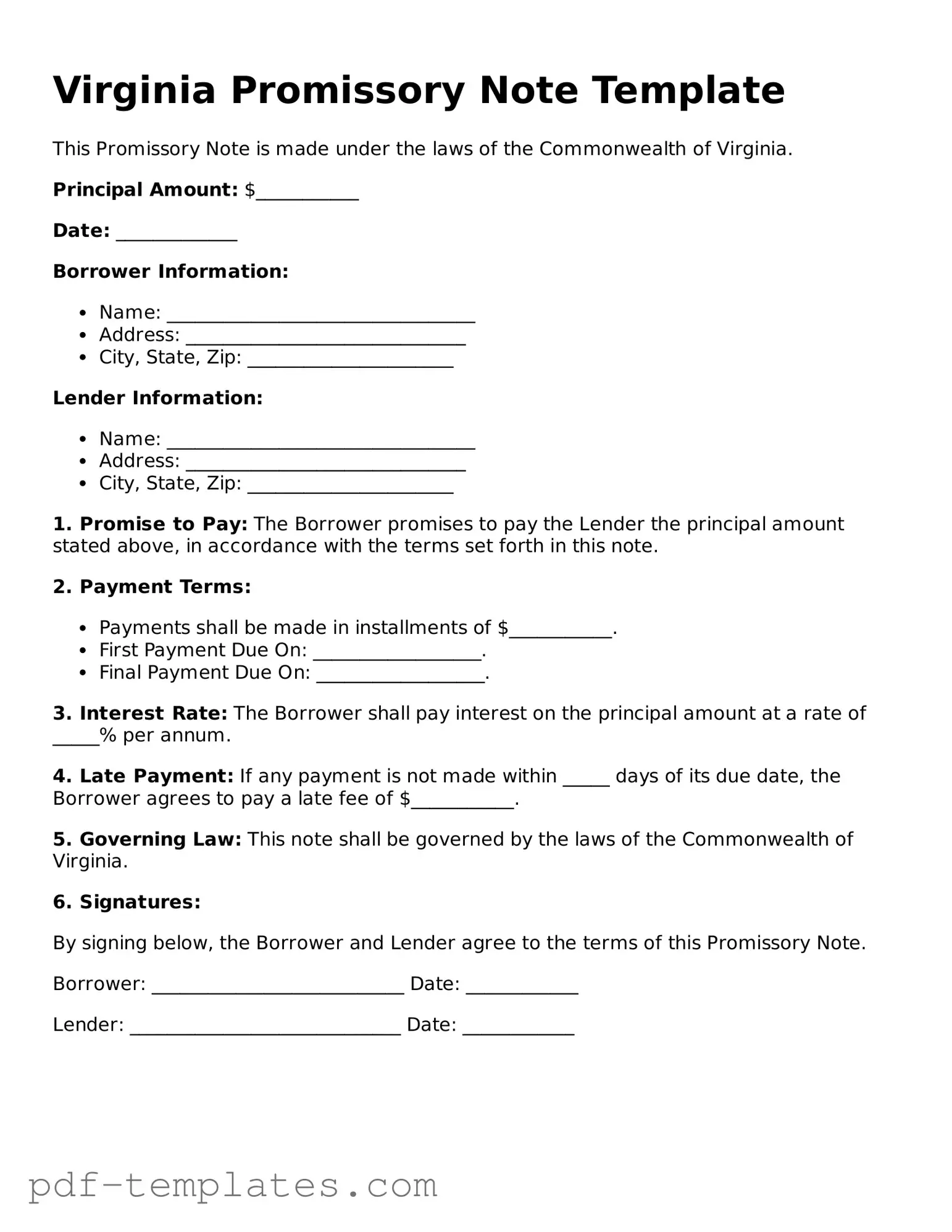The Virginia Promissory Note form is similar to a Loan Agreement. Both documents outline the terms of a loan, including the amount borrowed, interest rates, and repayment schedules. However, a Loan Agreement may also include additional clauses regarding collateral, default conditions, and other obligations of the borrower, making it more comprehensive than a simple promissory note.
A Mortgage Note shares similarities with the Virginia Promissory Note, as it serves as a written promise to repay borrowed money. The key difference lies in the fact that a Mortgage Note is secured by real property. This means that if the borrower defaults, the lender has the right to foreclose on the property, whereas a standard promissory note is typically unsecured.
An IOU is another document that resembles a promissory note. Both serve as informal acknowledgments of a debt. However, an IOU is generally less formal and may lack specific terms regarding repayment, such as interest rates or due dates, making it less enforceable in a legal context.
The California Medical Power of Attorney form is a vital legal document that allows individuals to designate someone they trust to make healthcare decisions on their behalf when they are unable to do so. This form is essential for ensuring that a person's healthcare preferences are honored, even if they are unable to communicate their wishes directly. By establishing this power of attorney, individuals gain peace of mind knowing their health care choices are made by someone they trust. For those looking to learn more, All California Forms provide comprehensive insights and resources.
A Secured Promissory Note is closely related to the Virginia Promissory Note but includes a security interest in specific collateral. This means that if the borrower fails to repay, the lender can claim the collateral to recover the debt. The added layer of security differentiates it from a standard promissory note, which does not involve collateral.
A Demand Note is similar in that it represents a promise to pay a specific amount. However, the key distinction is that a Demand Note requires repayment upon the lender's request, rather than on a set schedule. This flexibility can be beneficial for lenders who may need immediate repayment.
A Commercial Promissory Note is tailored for business transactions and shares many features with the Virginia Promissory Note. It outlines the terms of a loan for business purposes, including repayment terms and interest rates. The main difference is that it is specifically designed for commercial use, which may involve larger sums and different regulatory considerations.
A Student Loan Note is similar in its function as a promise to repay borrowed funds for educational purposes. Like the Virginia Promissory Note, it specifies the amount borrowed and repayment terms. However, student loans often come with unique features, such as deferment options and income-driven repayment plans, which are not typically found in standard promissory notes.
A Personal Loan Agreement is akin to a promissory note, as it details the terms of a personal loan between individuals. It includes the amount borrowed, interest rate, and repayment schedule. However, a Personal Loan Agreement may also encompass additional terms, such as late fees and the consequences of default, providing a more detailed framework for the loan.
Finally, a Balloon Note is similar to a promissory note but includes a large final payment, or "balloon," due at the end of the loan term. While it outlines the regular payment schedule like a standard promissory note, the balloon payment structure can create a significant financial obligation at maturity, distinguishing it from other types of notes.
